Red Yuccas Rule!
They aren’t really yuccas. In fact, they’re even better. Red yuccas are outstanding landscaping plants for almost all of our state, and new and exciting things are coming along it seems every day.
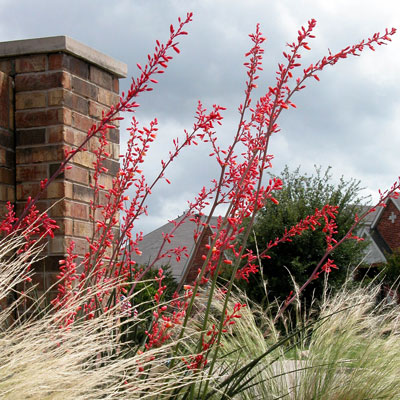
How this story got started…
Steve Huddleston, senior horticulturist with the Fort Worth Botanic Garden, gives a report from the gardens on my program on WBAP every Sunday morning. This past Sunday he talked about their growing collection of red yuccas. He gave credit to the hybridization program of Mountain States Wholesale Nursery of Arizona as he described six selections.
I told Steve that my wife and I had admired an extensive planting of them in the median of Central Expressway (US75) in Dallas south of LBJ Freeway (I-635). We drove down Central this past Sunday and I took these photographs from the passenger seat. I hadn’t expected to be there, so all I had with me was my iPhone, so pardon any resolution issues. Before I get into Steve’s story, I’ll show you my photos here.

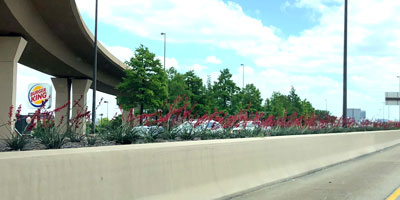
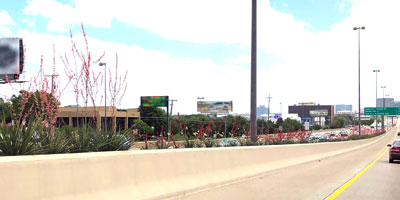
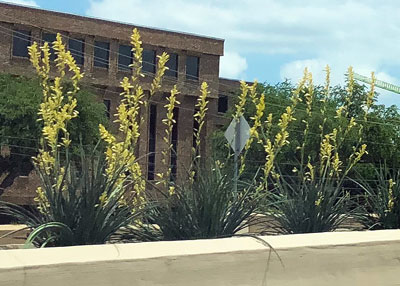
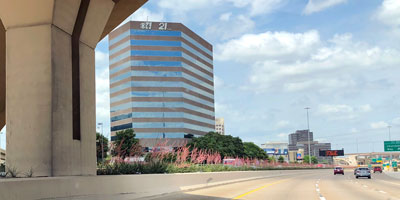
And so now, back to Sunday’s broadcast…
Within just a few minutes of Steve Huddleston’s report, I got a call from a man who asked me to go back over his list of red yuccas. Rather than do that, I told him I would feature them in this issue of e-gardens. I checked with Steve and got his permission just to copy and paste his notes into it. I’ve put Steve’s notes in green text so you’ll be able to find them easily.
So hang on tight. Here we go… (I’ll add some photos to go along so you can see what Steve was describing.)
Happiness is a Hesperaloe!
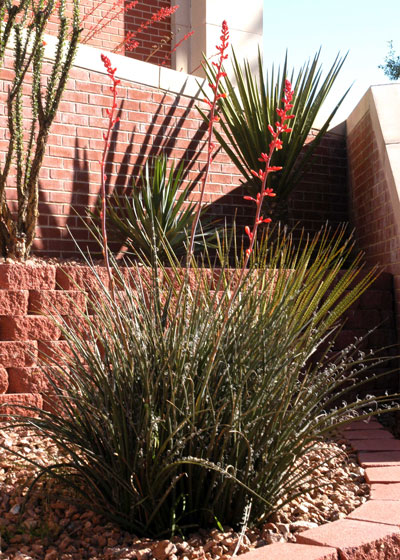
Red yucca (Hesperaloe parviflora) blooming now. One of the most carefree plants you’ll find, it produces tall, red stalks that sport coral-red, tubular flowers all summer long.
Red yucca makes a great container plant and is ideal for use around pools because of its clean habit. Several new cultivars now, compliments of Mountain States Wholesale Nursery, as follows:
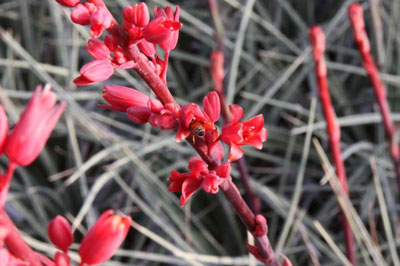
Brakelights Red 2 ft. x 2 ft. Vivid red flowers and a compact growth habit. It grows slowly to form 2-ft. clumps of narrow, leathery, blue-green leaves. Durable choice for streetscapes and public spaces.
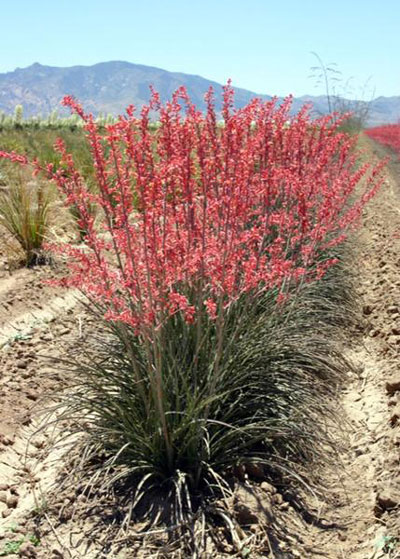
Desert Flamenco Grey-green mound of leaves tops out at 30 in. tall and wide. Compared to regular red yucca, this plant displays loads of side branching on the flower stalks creating waterfalls of showy, tubular, pinkish-orange flowers. It produces very few fruit, which allows for an extended bloom time from spring all the way through the fall. Particularly striking when planted en masse.
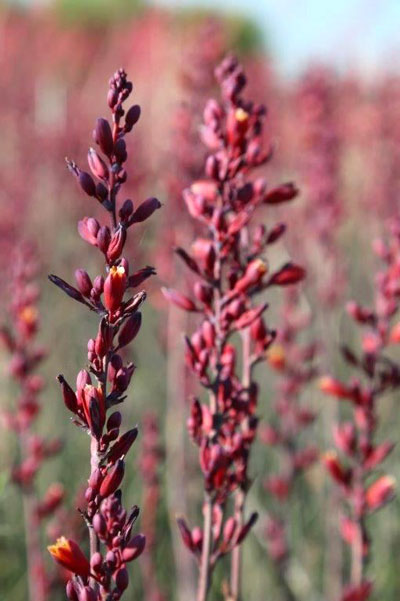
Desert Dusk This selection has unique maroon flowers on an upright and compact flowering stalk that is also maroon. Desert Dusk prefers full-sun exposures, but it can handle reflected heat or partial shade as well.
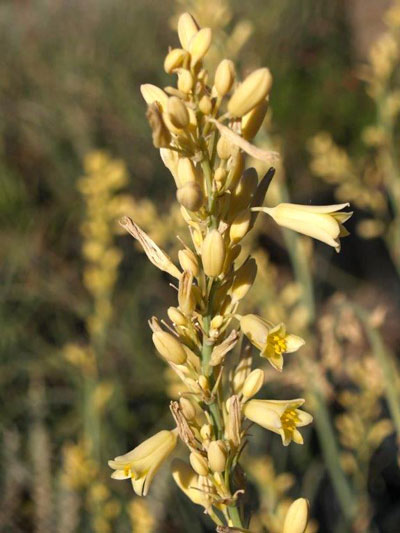
Yellow-flowering red yucca is available as well. Evergreen foliage to 3 ft. tall. It arches gracefully downward. Tubular flowers attract hummingbirds. Thrives in any well-drained soil and enjoys full sun and reflected heat.
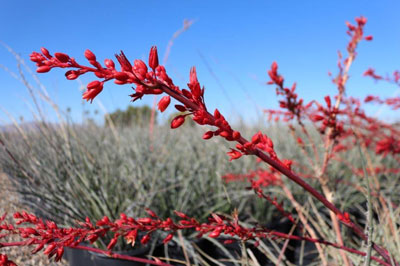
Sandia Glow Watermelon-red flowers and robust growth habit to 30-36 in. tall.
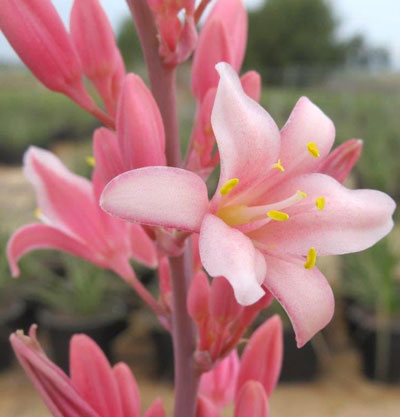
Hesperaloe Pink Parade A hybrid between Hesperaloe funifera and Hesperaloe parviflora, this plant is as durable and bullet-proof as both parents. The leaves are bright green, about an inch wide. They form upright clumps to 3-4 ft. tall and wide. The 8-ft.-tall flower spikes remain very straight, forming a linear pink line when planted in rows. ‘Pink Parade’ is perfect for right-of-way plantings and any sunny, hot, reflected-heat location. The tubular flowers attract hummingbirds.
As we wind things down, I thought you might enjoy seeing a couple of inspirational photographs sent to me by Janet Rademacher, Texas sales rep for Mountain States Wholesale Nursery. They are of their red yucca production fields in Arizona. Janet asked that I point out the page on their website where you can find local Texas retailers who handle their plants: https://mswn.com/retail-nurseries/. Scroll down to Texas. If your favorite nursery isn’t on that list, ask them to get on the bandwagon!
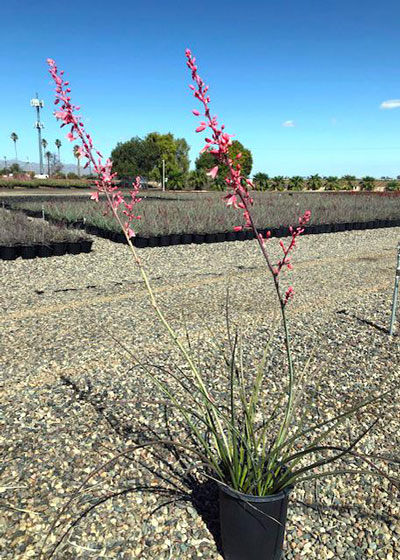
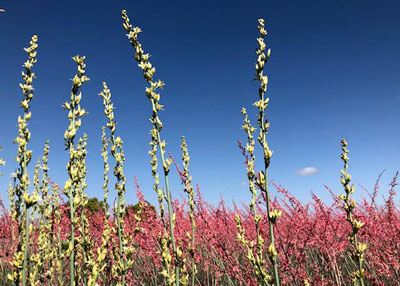
So that’s our tour of “What’s new” with the Hesperaloes. Here’s hoping you’ve made some new friends. Plant them in well-draining soils, preferably in a great deal of sunlight, and let them multiply and thicken for years. The best is yet to come.
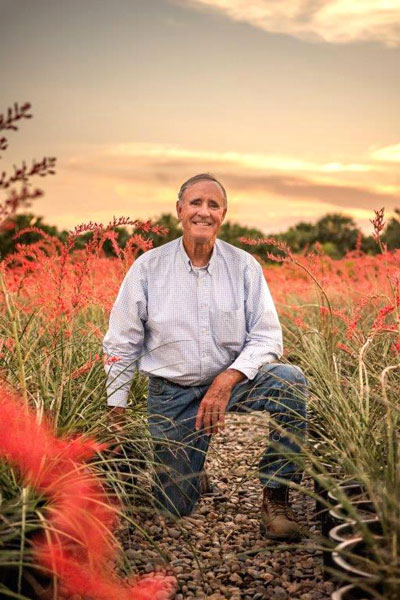
A postscript of merit…
Ever wonder what kind of person is behind such a monumental program of improving a single type of plant? Meet Ron Gass, founder and owner of Mountain States Wholesale Nursery. This fabulous photo from Garden Design was taken by Josh Endres.
Hats off, too, to TXDOT landscape architect Stephen Copley for his great vision in using the beautiful red yuccas in the foreboding environment of Dallas’ Central Expressway. Well done.
